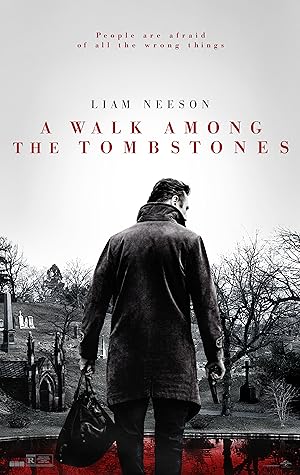A Walk Among the Tombstones simultaneously capitalizes and is hurt by Liam Neeson’s Taken fame. If A Walk Among the Tombstones had advertised itself in an honest fashion, fewer people would have seen it. I came to it expecting an unofficial Taken sequel so I was not mentally prepared for a slow, meditative movie that had Prisoners’ ambition, but felt like it missed the mark. To be fair, it may be brilliant, but because I am not familiar with the 12 steps or AA details, I glossed over the repeated AA meeting scenes, which ended up being more crucial to the plot than I originally thought. Initially I enjoyed that it was less action and more A Booth At the End in its take on the detective genre as we explored the story with Neeson’s character. The pigeon rooftop scene is probably the best part of the film, and Dan Stevens’ intense eyes steal every scene. I just don’t believe there is a world where anyone is crazy enough to cross Stevens and succeed. Even if I hadn’t recently seen The Guest, those eyes are laser-focused and somewhat mad.
Unfortunately because I’m not into mysteries and easily forget names, there were some crucial plot points/discoveries that seemed random. For example, when he goes to the library, how does he find the exact article on microfiche that is extremely relevant to the case–my failing, not the filmmakers’.
Visually it is a strange movie. It shoots 1999 NYC as if it was always dark, or it was the lawless 70s. If you saw Deliver Us From Evil, which you shouldn’t because it is crap, you’ll know what I mean. I didn’t have a problem with the darkness because A Walk Among the Tombstones is a detective movie. The only consistent moments of vibrant color are when A Walk Among the Tombstones represents the killers’ point of view, which is effectively disturbing for two reasons: you initially don’t recognize the sinister aspect and relate to the imagery and the filmmakers seem to enjoy that world more.
Perhaps my latter assertion is unfair, but I couldn’t think of a single female character that isn’t a victim or potentially a victim in the entire movie except maybe the librarian and the waitress. Women are literally voiceless, and after I watched the movie and discovered that there was going to be a supporting female character as Neeson’s partner, but the film replaced her with a black teenage actor, I thought, “The hell?” The black teenage character is crucial to the plot although initially he seems like a plot device to humanize Neeson’s character. I don’t mind movies or tv shows where women are victims, and if the movie is faithful to the book, which I haven’t read, then please direct my criticism to the author, but A Walk Among the Tombstones seems to prefer disembodied women as opposed to a whole one literally and figuratively. I don’t need a main female character or a major supporting female character, but damn, you so didn’t want a woman, you cast a black teenager, which somehow turned what normally is a cause of celebration into a realization that the filmmakers REALLY didn’t want even the slightest reality of a female character. A Walk Among the Tombstones is a solid movie, but I found the deliberate absence of whole women and the director’s delight in killing them more disturbing than the brutality of the killers.
Stay In The Know
Join my mailing list to get updates about recent reviews, upcoming speaking engagements, and film news.





